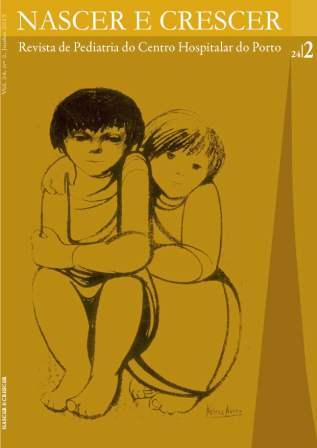Hypersensitivity vasculitis after treatment with methylphenidate - case report
DOI:
https://doi.org/10.25753/BirthGrowthMJ.v24.i2.8564Keywords:
hypersensitivity, methylphenidate, vasculitisAbstract
Introduction: Hypersensitivity vasculitis is the small blood vessels’ inflammation secondary to the formation and endothelial deposition of immune complexes.
Case Report: We describe a case of a 15 year-old female, recently medicated with methylphenidate for attention deficit hyperactivity disorder who presented recurrent episodes of feet pain and purpuric lesions on the toes. The lesions’ histopathological study showed findings consistent with lymphocytic vasculitis.
Discussion: The clinical and histopathological findings associated with the temporal relationship between the initiation of treatment with methylphenidate and the onset of symptoms and clinical resolution after discontinuation of the drug permitted the diagnosis of hypersensitivity vasculitis.
Downloads
References
Araujo TS, Kirsner RS. Vasculitis. Wounds. 2001;13(3).
Trugman JM. Cerebral arteritis and oral methylphenidate. Lancet. 1988 Mar 12;1(8585):584-5.
Schteinschnaider A, Plaghos LL, Garbugino S, Riveros D, Lazarowski A, Intruvini S, et al. Cerebral arteritis following methylphenidate use. J Child Neurol. 2000 Apr;15(4):265-7.
Thomalla G, Kucinski T, Weiller C, Röther J. Cerebral vasculitis following oral methylphenidate intake in an adult: a case report. World J Biol Psychiatry. 2006;7(1):56-8.
Syed RH, Moore TL. Methylphenidate and dextroamphetamine-induced peripheral vasculopathy. J Clin Rheumatol. 2008 Feb;14(1):30-3.
Goldman W1 Seltzer R, Reuman P. Association between treatment with central nervous system stimulants and Raynaud’s syndrome in children: a retrospective casecontrol study of rheumatology patients. Arthritis Rheum. 2008 Feb;58(2):563-6.
Robert H. Functional Roles of Norepinephrine and Dopamine in ADHD: Dopamine in ADHD. Medscape. 2006. (consultado em julho, 2014).
Ahmann PA, Waltonen SJ, Olson KA, Theye FW, Van Erem AJ, LaPlant RJ. Placebo-controlled evaluation of Ritalin side effects. Pediatrics. 1993;91:1101-6.
Yu ZJ, Parker-Kotler C, Tran K, Weller RA, Weller EB. Peripheral vasculopathy associated with psychostimulant treatment in children with attention-deficit/hyperactivity disorder. Curr Psychiatry Rep. 2010 Apr;12(2):111-5.
Atzori L, Ferreli C, Biggio P. Less common treatment in cutaneous vasculitis. Clin Dermatol. 1999;17:641-7.
Downloads
Published
How to Cite
Issue
Section
License
Copyright and Authors' Rights
All articles published in Nascer e Crescer - Birth and Growth Medical Journal are Open Access and comply with the requirements of funding agencies or academic institutions. For use by third parties, Nascer e Crescer - Birth and Growth Medical Journal adheres to the terms of the Creative Commons License "Attribution - Non-Commercial Use (CC-BY-NC)".
It is the author's responsibility to obtain permission to reproduce figures, tables, etc. from other publications.
Authors must submit a Conflict of Interest statement and an Authorship Form with the submission of the article. An e-mail will be sent to the corresponding author confirming receipt of the manuscript.
Authors are permitted to make their articles available in repositories at their home institutions, provided that they always indicate where the articles were published and adhere to the terms of the Creative Commons license.


